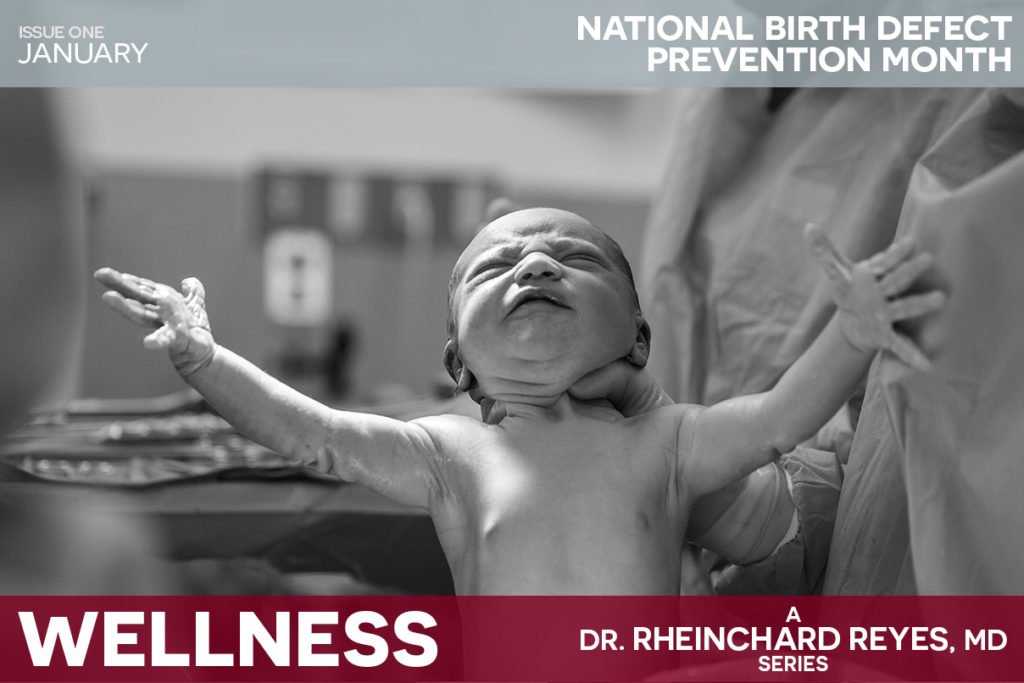January is National Birth Defects Prevention Month. One out of every 33 babies is born with a birth defect in the US, making it highly probable that you know someone in your family or your circle of friends affected by it. Let us review the causes, the tests currently in place to help with the diagnosis, and what can be done to prevent this in utero disorder.
Causes & Associated Risk Factors
Could be a single event or a combination of them.
- Genetics, such as a family history of disorders.
- Lifestyle Choices, which can include such polarized factors as choosing to give birth over the age of 35 or the use and consumption of drugs, alcohol and cigarettes.
- Behavior, such as insufficient or inadequate prenatal care.
- Exposure to specific medication and chemicals, such as lithium or the high-risk isotretinoin.
- Infections during pregnancy, such as untreated viral or bacterial infections, which of course include STDs
Diagnosis
Most birth defects are diagnosed during pregnancy, but it is important to highlight that prenatal tests are not bulletproof. They cannot always ascertain the presence of a birth defect. Or there may be false positives.
A healthcare provider will, for example, use prenatal ultrasound as an aid to help spot certain defects in the womb, while other prenatal tests may determine if the mother has an infection or some other condition that could prove dangerous for the unborn baby.
Screenings with more in-depth reach are also available: amniocentesis and blood tests. This range of tests is offered to women with higher-risk pregnancies, such as adverse genetics, history or advanced maternal age.
In any event, the majority of defects can be diagnosed with a high degree of accuracy once the baby is born. A physical and a hearing test are normally performed as a means to help doctors pinpoint potential defects. An example of a post-birth blood test is the newborn screen, which helps physicians diagnosticate birth defects before symptoms appear.
Prevention
Important tips and advice in helping prevent birth defects.
- Folic acid– Take 400 micrograms (mcg) every day during the pregnancy, even before if it is planned. It helps prevent spine and brain issues. It can be taken in the form of vitamins, but is also found in fortified foods, like certain breads and cereals.
- Doctor appointment– Your healthcare provider can guide you before stopping or starting any medicine or health supplement, whether it is to fight a pre-existing condition or to stay healthy during pregnancy.
- Vaccine up-to-datedenes– Vaccines protect you and your baby. They can even help prevent birth defects. For example, do not shy away from the flu and the whooping cough shots. Others, such as live-virus vaccines, may be a risk factor. Your doctor will let you know which ones you need.
- Healthy weight– This should be achieved before getting pregnant, if planned, or as soon as possible once the pregnancy is confirmed. It helps reduce the risk of birth defects and pregnancy complications. Regular exercise and healthy eating are key.
- Avoid harmful substances– Alcohol, tobacco and other drugs should be completely discontinued. All other medication should be carefully assessed by your healthcare professional.
Sources:
https://www.healthline.com/health/birth-defects#risk-factors
https://www.cdc.gov/ncbddd/birthdefects/prevention-month.html


